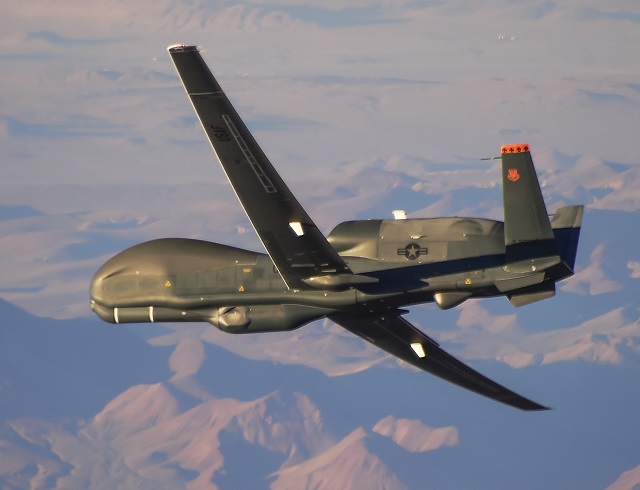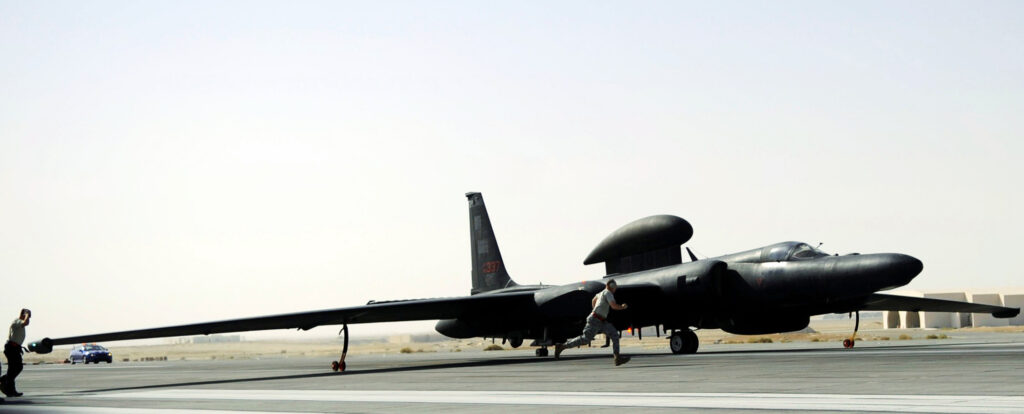Global Hawk Tests U-2 High Rez Camera; Flight Costs Drop
Posted on

The battle for ISR primacy continues between the venerable U-2 and the unmanned Global Hawk, but the Northrop Grumman drone took another step forward Oct. 6 in its quest to do what its manned competition does, and more.
The aircraft flew with an Optical Bar Camera broad-area synoptic sensor, a tool that has been a key reason for Lockheed Martin‘s U-2’s use by combatant commanders.
“The successful flight of the Optical Bar Camera is another significant step in the evolution of Global Hawk. It’s the result of our focus on increasing capability, reducing sustainment costs and fielding the Open Mission Systems architecture that enables faster integration of cutting edge sensors at lower costs,” Mick Jaggers, vice president for Global Hawk, said in a statement.
 Northrop plans to fly the camera four more times to focus it and test the result, since it’s a fixed-focus camera. By the middle of November, Jaggers says they will fly the camera with film. They want to see if they fly with it at 40,000 feet and 60,000 feet to see if they get higher resolution products without refocusing the camera.
Northrop plans to fly the camera four more times to focus it and test the result, since it’s a fixed-focus camera. By the middle of November, Jaggers says they will fly the camera with film. They want to see if they fly with it at 40,000 feet and 60,000 feet to see if they get higher resolution products without refocusing the camera.
The camera’s physical use by the Global Hawk was made possible by Northrop’s Universal Payload Adapter built for the aircraft. But the flexible use of the system was made possible by the use of the Air Force’s Open Mission Systems standard.
Formally adopted two years ago, the Open Mission Systems standard aims to foster competition on subcontracts by adopting the cell phone apps model. Just as Apple publishes standards for integrating technologies that allow other companies to develop applications that work with its iPhone, Open Mission Systems has prime aircraft contractors publish system architecture standards so other companies can make communications, radar and other mission technologies that work with the prime contractor’s platform.
While Open Mission Systems allows software to work across platforms, each platform needs a physical interface as well.
The successful flight is the second of three planned demonstrations of sensors previously unavailable on the Global Hawk. Northrop Grumman successfully flew a SYERS-2 intelligence gathering sensor in February of this year and plans to fly the MS-177 multi-spectral sensor later in 2016.
Jaggers told me that the multi-spectral sensor will be followed by flight tests with a Foliage Penetrating and a Multispectral sensor. It is unique because of the “agility of the seeker head,” Jaggers said. The other seeker heads go left or right so you have to move the aircraft to get certain angles. This one can pan fore or aft, he explained.
There will be other sensors tested on Global Hawk, including probably some from the space and intelligence communities. now we need to reach out to community and what do you need to carry
“I do tell my space brethren that I am a near space configured asset and I can carry those sensors,” Jaggers said.
All this takes place in the shadow of U-2. The Global Hawk Block 30 got retired. But it had congressional friends. Then the U-2 was retired in the 2015 budget. Now the U-2’s “retirement” was put on hold ’til 2019 in the 2017 defense budget. In addition to the sensor battles between the two platforms, cost was a huge challenge for Global Hawk.
That article of faith is fraying. Flying costs are down 50 percent since 2013 from $33,000 per hour to less than $15,000 per hour, Jaggers said.
Subscribe to our newsletter
Promotions, new products and sales. Directly to your inbox.
